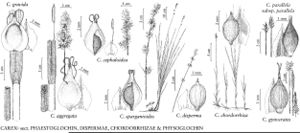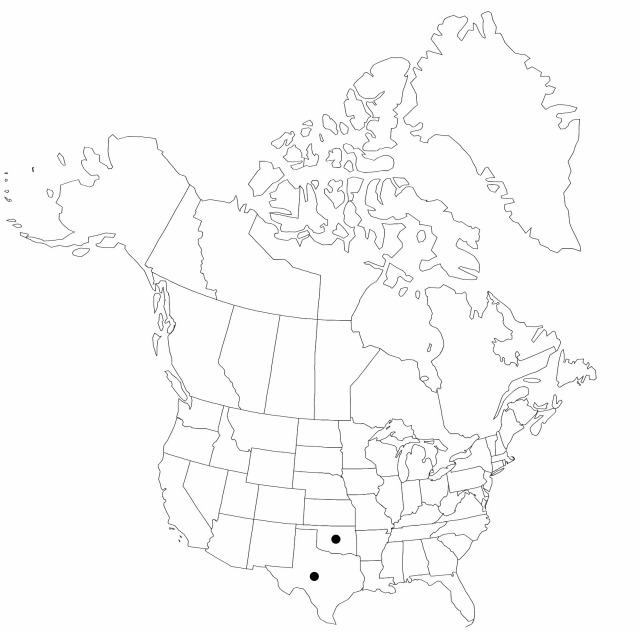Carex perdentata
Sida 16: 342, fig. 1. 1994.
Plants without conspicuous rhizomes. Culms 17–75(–90) cm, 2–3.5 mm wide basally, 0.5 mm wide distally. Leaves: sheaths tight, green, fronts hyaline; ligules to 2.5 mm, as long as wide; widest leaf blades 2.2–4.6 mm wide, papillose adaxially. Inflorescences with 5–14 spikes, 1.4–2.8 cm × 9–14.5 mm; proximal bracts 0.7–6(–10) cm, shorter than to 2.5(–5) times as long as inflorescences; spikes with (2–)4–24 ascending to spreading perigynia; proximal internodes shorter than proximal spikes. Pistillate scales pale brown to greenish hyaline, with green usually 1-veined center, ovate, 1.6–3.1 × 1.4–2.2 mm, body narrower than and 2/3 length of perigynium, apex usually awned, awn to 3.6 mm. Anthers 1.3–1.9 mm. Perigynia pale green to pale brown, veinless or weakly 1–10-veined on each face, 3.3–5.6 × 1.9–2.8 mm, margins serrulate distally, base of body somewhat spongy, thickened; beak (1–)1.4–1.8 mm, apical teeth (0.5–)1.4–1.8 mm. Achenes suborbiculate, 1.8–2.8 × 1.5–2.2 mm.
Phenology: Fruiting spring.
Habitat: Open mesic forests and savannas
Elevation: 200–500 m
Discussion
Carex perdentata is fairly widespread in central Texas and may occur in similar habitats in neighboring states. It can be confused with other species in the section, especially C. arkansana, C. mesochorea, and C. muehlenbergii.

